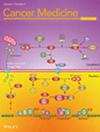Elevated KIF2C Expression Drives Osteosarcoma Progression by Modulating the Wnt/β-Catenin Signaling Pathway and Contributing to an Immunosuppressive Tumor Microenvironment
Abstract
Background
Although kinesin family member 2C (KIF2C) is implicated in various cancers, its role in osteosarcoma (OS) and the associated inflammatory microenvironment remains unclear.
Methods
Publicly available datasets were analyzed to determine KIF2C expression, diagnostic value, and prognostic relevance in OS. In vitro (proliferation, colony formation, apoptosis, migration, invasion) and in vivo assays assessed its biological functions. KEGG enrichment and GSVA explored underlying pathways. ssGSEA, ESTIMATE algorithms, and single-cell sequencing evaluated the immune context, and molecular docking and molecular dynamics identified potential inhibitory compounds.
Results
KIF2C was significantly overexpressed in OS, effectively distinguishing OS from normal tissues. Elevated KIF2C levels correlated with poor survival outcomes. Silencing KIF2C suppressed OS cell proliferation, migration, invasion, and in vivo tumor growth, while promoting apoptosis; conversely, overexpression of KIF2C had the opposite effect. Mechanistically, co-immunoprecipitation results indicated that KIF2C can bind to β-catenin to regulate the Wnt/β-catenin pathway. Furthermore, high KIF2C expression was associated with an immunosuppressive tumor microenvironment characterized by immune exhaustion. Molecular docking and molecular dynamics suggested butein as a candidate small-molecule inhibitor targeting KIF2C-related oncogenic mechanisms.
Conclusion
KIF2C drives OS progression by enhancing Wnt/β-catenin signaling and fostering an immunosuppressive microenvironment. Targeting KIF2C may offer new therapeutic approaches in managing OS.


 求助内容:
求助内容: 应助结果提醒方式:
应助结果提醒方式:


